Persimmon
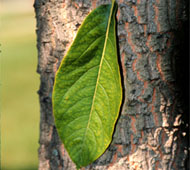
Leaf Characteristics
- broad, flat leaves
- simple leaves
- not lobed
- smooth margins, entire
- alternate leaves
- without needle-like bristles
- not heart-shaped
- widest toward tip or middle
- 4-7 inches long, edges wavy
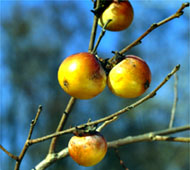
Fruit Characteristics
- other fruit (not cone, winged, acorn, or in pod or capsule)
- without husk or capsules
- loose, not packed tightly together
- fruit with seeds
- seeds 1/2" or more in length, flattened
- fruit round, about 1.5" in diameter
In 1980, the Ohio Forestry Association recorded a 66-foot specimen of Persimmon in Van Wert County, Ohio. The Persimmon typically has a rather short trunk and a rounded or cylindrical crown of dense branches. Often, it sprouts from its roots and thickets of smaller trees surround a larger one. Sometimes the Persimmon grows as a shrub. The thick, brown to black bark is distinctively broken into small, square blocks. This tree probably is best known for its sweet, orange fruit in the fall. The Persimmon grows in light, well-drained soils. It can be found in a variety of places: in moist valleys and on drier uplands, along roadsides, in old fields and clearings, and in mixed forests. This tree ranges from southern New England throughout the southeastern United States, westward to Iowa, Oklahoma and Texas. Ohio is at the northern limit of its range, and the Persimmon occurs in the southern and southeastern counties. The wood of this tree is close-grained, strong and hard. Woodworkers use it to make golf club heads, billiard cues, and shuttles that are used in weaving. Also, workers use it for veneer and flooring. People eat the fresh fruit, and they make Persimmon bread, puddings and cakes. Native American Indians stored dried Persimmon fruit like prunes. Many animals, including turkey, quail, opossums, raccoons, skunks and deer, feed on the fruit.
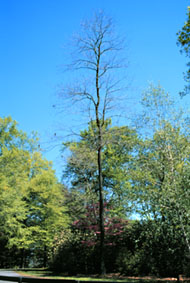 Tree Size
height 20' - 70'
diameter 1' - 2'
Tree Size
height 20' - 70'
diameter 1' - 2'
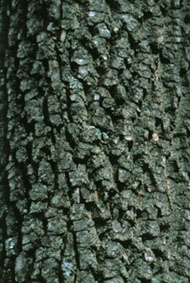 Bark
Bark
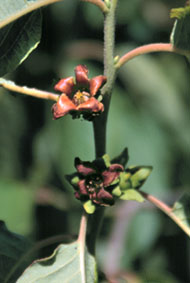 Flower
Flower 